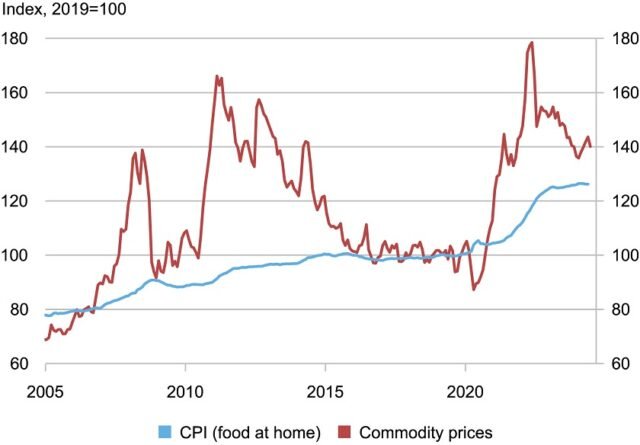Rising Food Prices in 2025: What’s Behind the Surge and How It Affects You
In recent months, consumers around the world have begun to feel the pinch of rising food prices. From basic groceries to everyday household staples, the cost of living is noticeably climbing. But what exactly is causing this sharp increase, and what can everyday individuals do to cope?
The Global Picture
The surge in food prices is not isolated to one region. It’s a global issue, with both developed and developing countries experiencing similar trends. According to recent reports from global economic analysts, the primary drivers include erratic weather patterns, geopolitical conflicts, increased transportation costs, and disruptions in supply chains.
Unpredictable climate conditions—such as prolonged droughts in Africa and floods in parts of Asia—have significantly affected agricultural output. Crops like wheat, rice, and maize have seen decreased yields, which directly pushes prices higher in local and international markets.
War and Supply Chain Disruptions
Ongoing conflicts in key agricultural regions have only made matters worse. The Russia-Ukraine war, for instance, continues to disrupt grain exports. Ukraine, once known as the “breadbasket of Europe,” has seen its exports fall drastically, impacting not just Europe but also countries in Africa and the Middle East that rely heavily on Ukrainian grain.
Meanwhile, disruptions in global supply chains—partly a lingering effect of the COVID-19 pandemic—continue to slow down the transport of goods. Higher fuel costs have added pressure, making it more expensive to move food products from farms to supermarkets.
Local Impact: The Everyday Consumer
For the average person, these global issues are translating into higher grocery bills. Items like bread, milk, vegetables, and cooking oil have seen price hikes of 10% to 30% in some areas. Families with fixed or low incomes are the hardest hit, often forced to adjust their meals, reduce consumption, or seek out cheaper alternatives.
Restaurants and small food businesses are also feeling the pressure. Many have had to revise menus, reduce portion sizes, or increase prices to stay afloat, which in turn affects consumers’ dining habits and choices.
What Experts Say
Economists warn that food inflation may not slow down anytime soon. “The current trends indicate a long-term shift rather than a temporary spike,” says Dr. Anita Desai, a food economist based in New Delhi. “Unless we see coordinated global efforts to stabilize supply chains and mitigate climate change, prices will continue to rise.”
Governments are beginning to respond. Several countries have introduced subsidies on basic food items or reduced taxes to ease the burden. However, these are often short-term solutions to a long-term problem.
Tips for Consumers to Manage the Crisis
-
Plan Meals Wisely – Buying in bulk and preparing meals at home can help cut down on costs.
-
Buy Local and Seasonal – Supporting local farmers not only boosts the economy but also ensures fresher, cheaper produce.
-
Use Apps and Discounts – Many grocery apps offer real-time deals and coupons that can help reduce the bill.
-
Avoid Food Waste – Store food properly, and make sure to use leftovers creatively to stretch your budget.
Final Thoughts
The rising cost of food is more than just an economic issue—it’s a daily reality affecting millions. While the problem is complex and deeply rooted in global systems, being informed and making small changes can help individuals and communities better navigate this difficult period.
As the world continues to grapple with these challenges, one thing is clear: resilience, adaptability, and smarter choices are key to weathering the storm.










